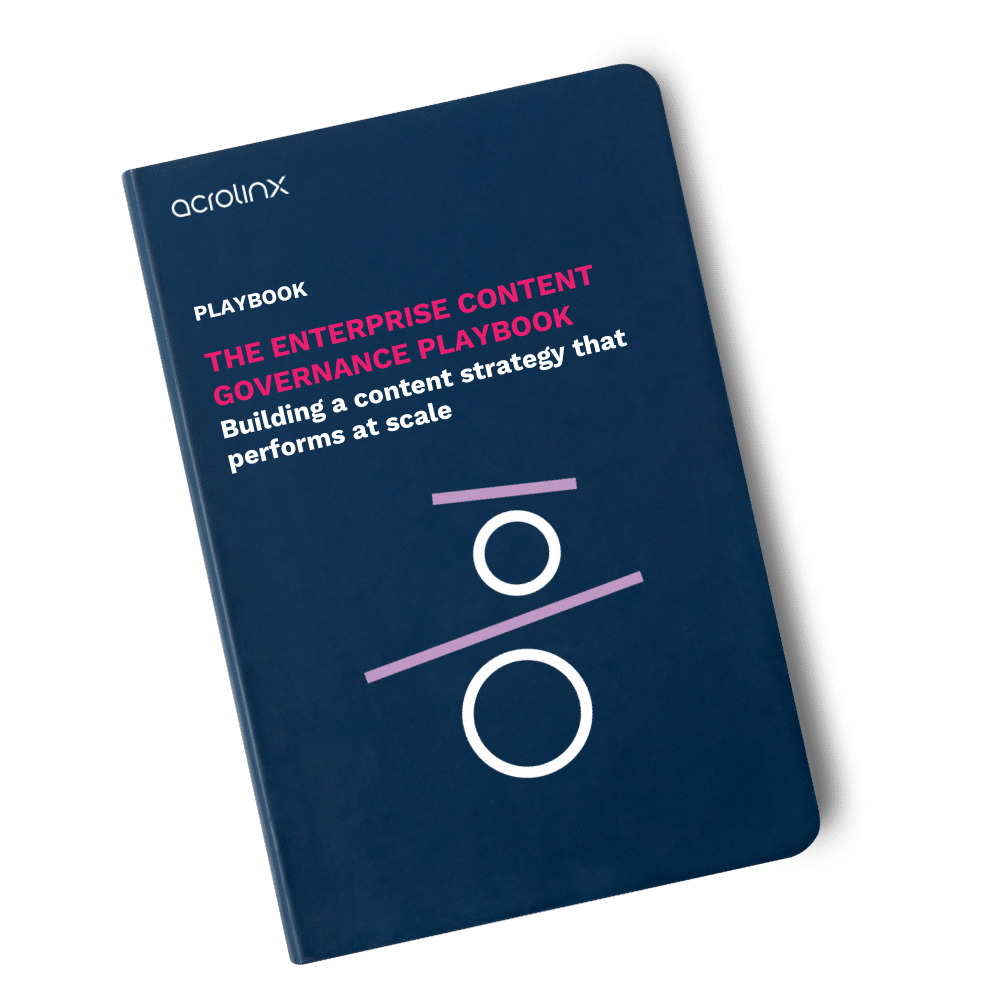
Key elements of a financial services content strategy
How are your customer satisfaction scores lately? Average, fluctuating? Or are they consistently amazing? If you’re reading this blog, you probably recognize there is still room for improvement! Let’s explore how content can be the thing that makes all the difference between good and great customer experiences.
Improving customer satisfaction scores through content in the financial services sector requires a commitment to:
- Delivering value: Financial customers seek solutions that address their needs and provide tangible benefits. High-value content educates, informs, and empowers customers, helping them make confident financial decisions.
- Being transparent: Transparency builds trust, a critical factor in the financial industry. Clear, straightforward language helps demystify complex concepts, reduces customer confusion, and aligns with regulatory compliance.
- Personalizing experiences: Personalized content resonates with individual customers, addressing their unique needs and preferences. Tailored messaging fosters stronger connections and improves overall customer satisfaction scores. delivering value, transparency, and personalized experiences. By understanding your audience, creating informative content, and continually refining your approach, you can build trust and enhance customer satisfaction.
How to improve CSAT Scores
Improving customer satisfaction scores in the financial services industry through content requires a strategic approach that combines informative, helpful, and engaging content with a thorough understanding of your target audience. With technology like Acrolinx you can document your content strategy for different target audiences, and provide an engaging, consistent, and inclusive customer experience across all the digital touchpoints. All while meeting your customer’s financial goals, and your larger business objectives.
From understanding your customers’ needs to regularly updating and refreshing old content, we’ll cover the entire process of creating impactful content that builds customer trust, using Acrolinx.
Step 1: Understand your audience and their needs
You’ll no doubt have insights from marketing research that document your target audience’s needs, preferences, pain points, and financial goals. From there you’ll likely document detailed buyer personas to represent your ideal customers, and divide your target audiences into various segments with different needs and interests.
You need to tailor your content to address the specific concerns of each segment, whether it’s retirement planning, investment strategies, or personal finance management. To do that, you’ll need to adapt your content guidelines to the clarity and readability level, tone of voice, and level of technical detail. You’ll also need to document which terms you can’t use, which terms are commonly misused, and how to make potentially complex financial lingo easy to understand. Important terminology and messaging can be added or bulk uploaded into Acrolinx. Deprecated terms, phrases, and messaging can be added and linked to preferred variants.
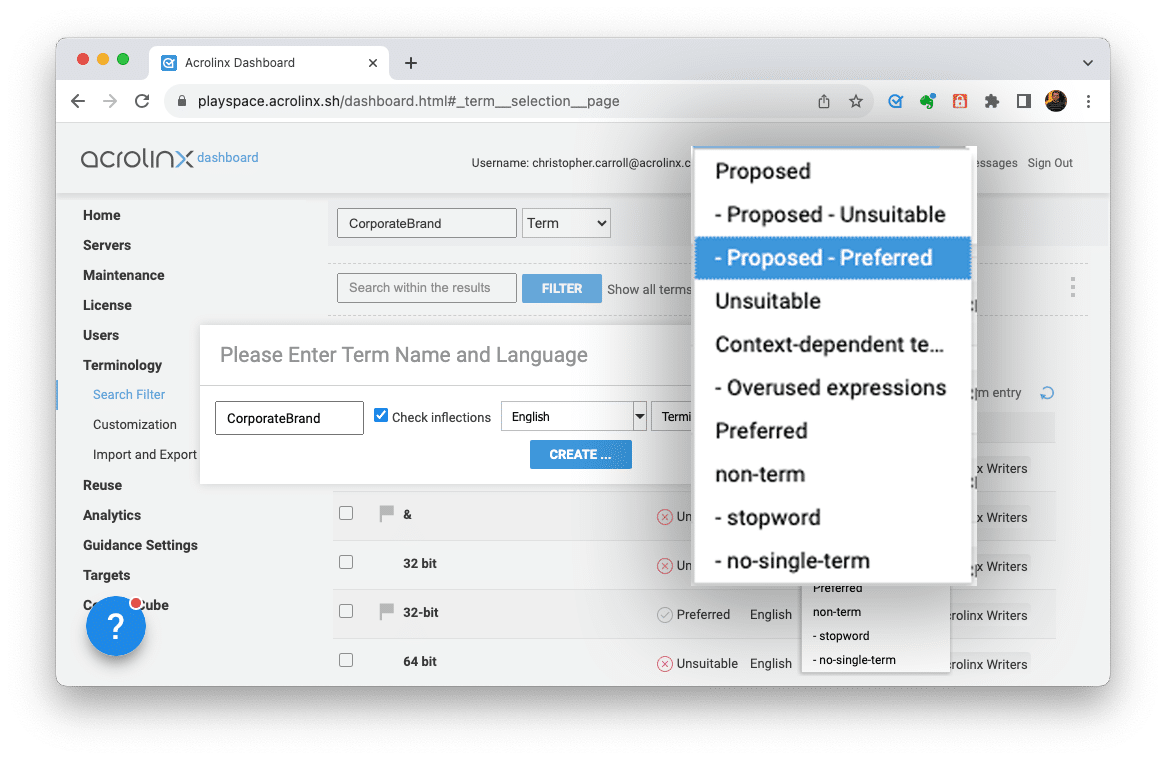
As writers will inevitably use incorrect variants of your terminology and messaging, Acrolinx will find them and give writers with clickable replacements to keep content compliant.
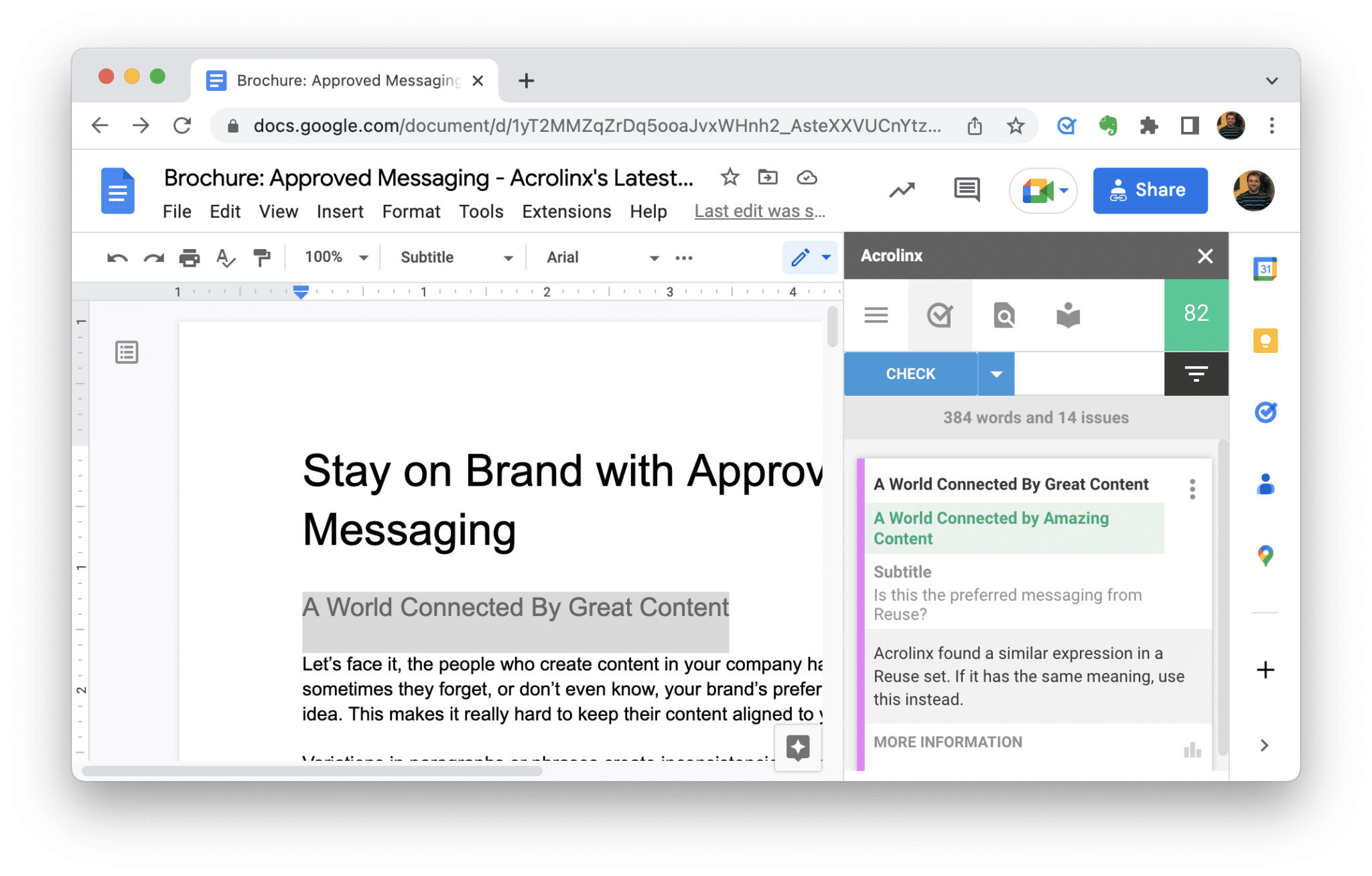
Step 2: Provide educational content
Financial topics can be complex, but it’s possible to simplify them through informative and educational content. While marketers typically use blog posts, articles, videos, infographics, and webinars to explain financial concepts, investment options, and best practices, customer support teams might use e-Learning short courses, knowledge articles, in-app tutorials, or chatbots to educate customers.
Creating educational content involves careful consideration of different elements of language to make sure your message is easy to understand. They include:
Language element Explanation Clarity Use clear and straightforward language to ensure that your content is easy to understand. Avoid jargon and complex vocabulary unless it’s essential to the subject matter. Use simple sentence structures to avoid confusion. Break down complex ideas into smaller, digestible parts. Define technical terms and provide explanations for unfamiliar concepts. Tone and Voice Your tone should be authoritative, but not condescending. It should convey a sense of expertise and professionalism while remaining approachable.
The voice should match the subject matter. For example, scientific content may have a more formal and objective voice, while content aimed at children can be more friendly and playful. Tailor the language and content complexity to the target audience’s age, educational background, and prior knowledge.Accuracy and Relevancy Make sure your content is relevant to the audience’s needs and interests. Relate the information to real-life situations or problems to engage the reader. Use anecdotes, real-world examples, and case studies to illustrate concepts accurately and make them more relatable. Scannable and Logical Present information in a logical sequence, with a clear beginning, middle, and end. Use headings, subheadings, and bullet points to aid readability. Use transitional words and phrases to connect ideas and guide the reader through the content smoothly. Readability Choose a readable font and maintain consistent formatting throughout the content. Use bold, italics, and bullet points to emphasize key points.Break up text with white space to prevent overwhelming the reader. Short paragraphs and clear spacing improve readability. Consistency Follow a consistent style guide for grammar, punctuation, and formatting. Use the same terminology and descriptions for the same process, product, or service every time you mention it. Accessibility & Inclusive Language Make sure your content is accessible and uses inclusive language. Use alt text for images, provide transcripts for videos, and use a font size and color scheme that is easy to read. Citations and References Properly cite sources and provide references to support the accuracy and credibility of the content. Encourage readers to explore the topic further if they want to.
Acrolinx uses audience targets to create focused writing guidelines for different languages, locales, use cases, industries and more. Each target can be configured to find compliance issues and find issues with scannability, clarity, inclusivity, consistency, tone of voice, and more.
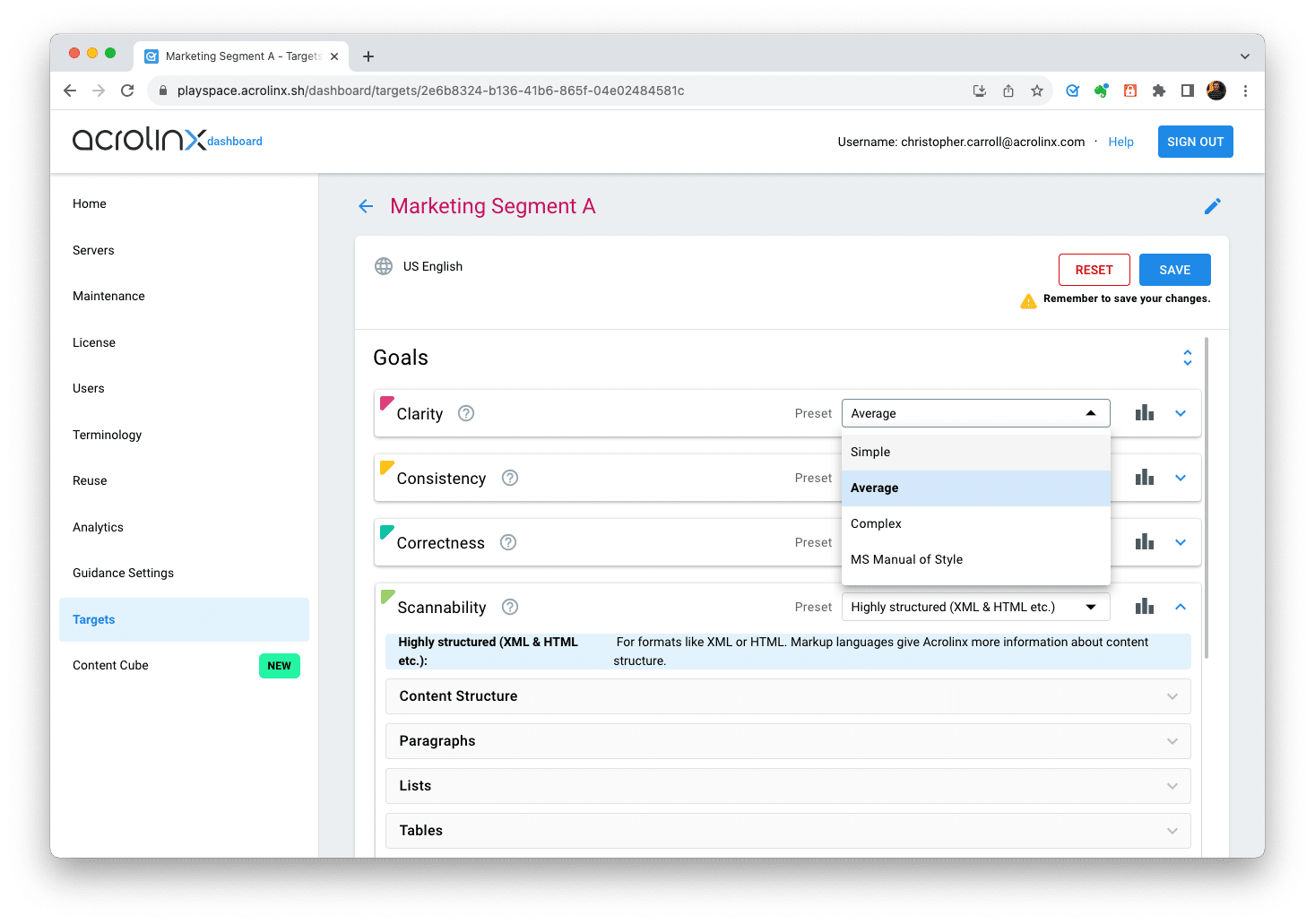
Step 3: Regularly update and refresh content
Keep your content up-to-date with the latest industry shifts and regulations. Acrolinx can help you check large content repositories and keep evergreen content green, to ensure its relevance over time.
Use the Content Analyzer to check many different content formats, and see a score for large batches of content at once. At a glance, it allows you to see which content pieces have issues and where it makes the most sense to start updating content. This is a fast and easy way to analyze any gaps you have in your content.

Step 4: Let data guide your content improvement
Once you’re confident in the content you’re publishing, encourage feedback from your customers and prospects. Act on their suggestions and address any concerns promptly. But even better, is to use Acrolinx to automatically check your content at a regular cadence.
The Content Cube gives you a quick overview of how your content score across the different qualities of content (Clarity, Consistency, Correctness, Inclusive Language, Scannability, Tone, Words and Phrases, Approved Messaging) to know what kind of issues appear most in your content and perhaps where you need to improve your guidance for content creators.
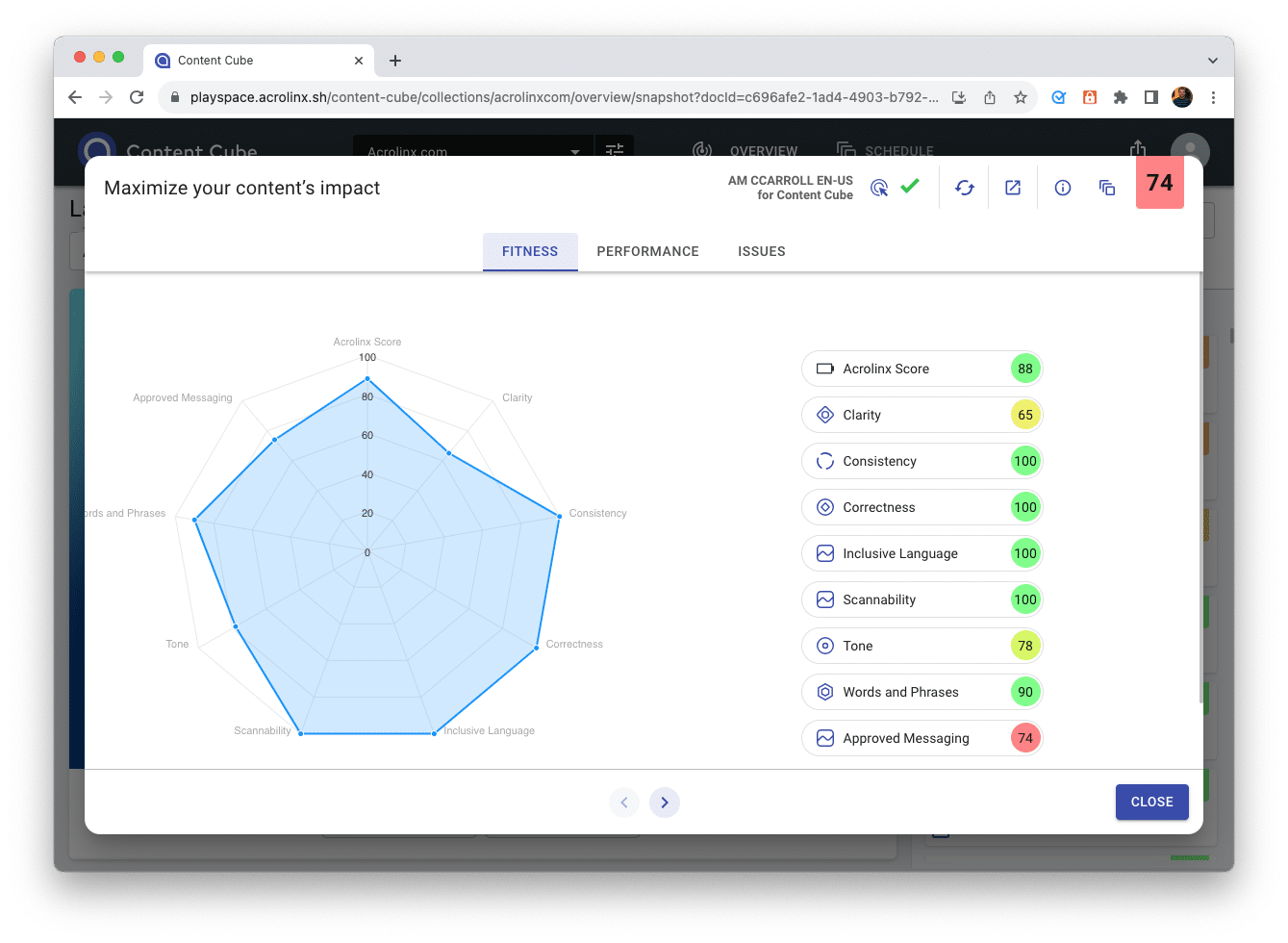
You can then prioritize these pages by issue type, such as compliance issues. You can then export these lists and send them to the content team. Each export includes detailed information on the type of content, where it’s located, and the exact issue to correct.
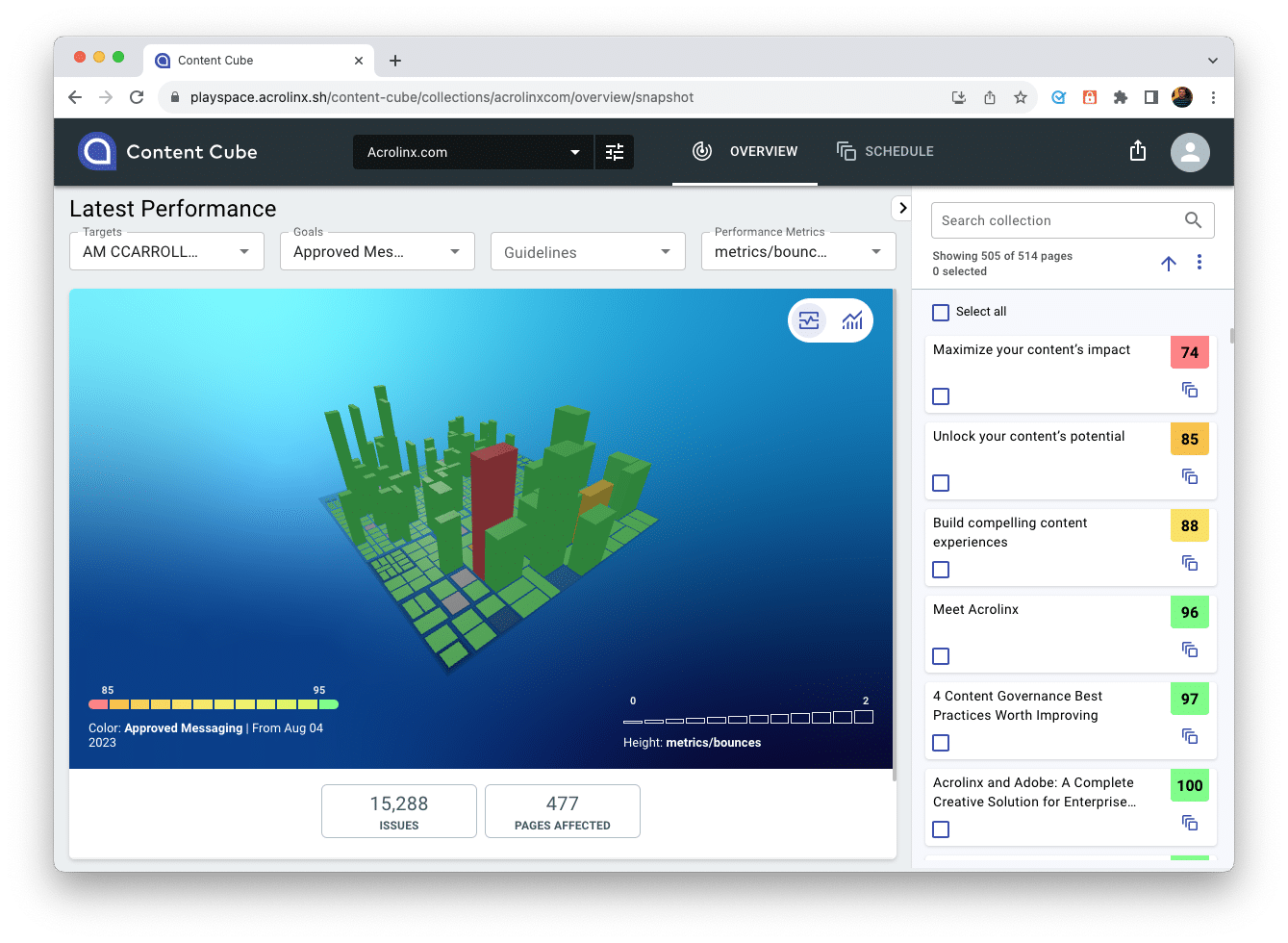
Redefine customer satisfaction with smarter content
Every customer success team needs a way to make sure their content is primed to deliver an excellent customer experience. Don’t leave it up to chance, or wait for customer feedback to improve your content.
Acrolinx is an AI-powered software that helps your teams improve the quality, consistency, and effectiveness of your content. It reinforces customer trust with content that has a consistent terminology, style, tone, and messaging, while improving clarity and readability. Acrolinx also streamlines content localization for global organizations with better quality source content. And with analytics insights for continuous content monitoring and improvement, Acrolinx helps meet compliance and legal requirements and reduces risks that could negatively impact the customer experience.
Are you ready to create more content faster?
Schedule a demo to see how content governance and AI guardrails will drastically improve content quality, compliance, and efficiency.

Kiana Minkie
She comes to her content career from a science background and a love of storytelling. Committed to the power of intentional communication to create social change, Kiana has published a plethora of B2B content on the importance of inclusive language in the workplace. Kiana, along with the Acrolinx Marketing Team, won a Silver Stevie Award at the 18th Annual International Business Awards® for Marketing Department of the Year. She also started the Acrolinx Diversity and Inclusion committee, and is a driving force behind employee-driven inclusion efforts.

